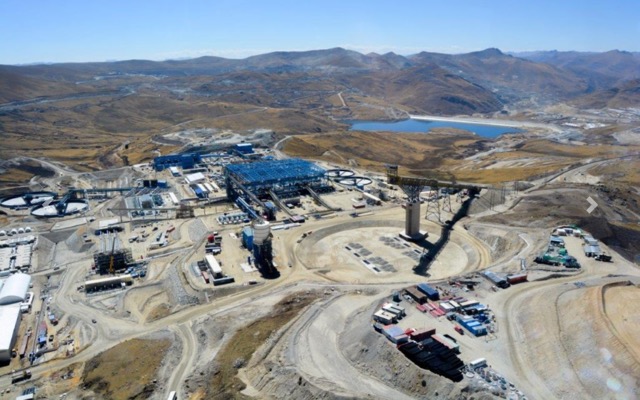Peru copper production hit amid ongoing protests

There are fears protests will spread to other major mines in Peru amid growing social unrest.
Operations at Chinese entity Minerals and Metals Group’s (MMG) Las Bambas mine in Peru remain suspended as local communities protest “years of broken promises” – exacerbating existing political tensions in the country.
As the world’s second largest copper and zinc producing country, Peru’s copper output in 2021 was 2.3 million tonnes.
The Las Bambas copper mine, alone, represents 2% of all copper production in the world and accounts for 15% of Peru’s copper output.
Protesting within the Las Bambas copper mine commenced nearly a month ago causing operations to be brought to a swift halt.
Protests have also stopped mining activity at Southern Copper’s Cuajone operation in Peru since February.
Cuajone protesters are calling for financial compensation and a share of future profits.
Peru Prime Minister Aníbal Torres said the communities protesting at Cuajone “are demanding something irrational” with requests of up to US$5 million in financial reimbursement.
A state of emergency was declared at Cuajone and Las Bambas last month, with stoppages at both mines taking about 20% of the country’s copper production offline.

Minerals and Metals Group’s Las Bambas copper mine.
Many experts claim Las Bambas and Cuajone are the backbone of the Peruvian economy, with the operations representing 1.5% of the Andean country’s gross domestic product (GDP).
With rising unrest sweeping the nation, there are fears other mines will be hit by protests, which have already affected other mines since last July including Antapaccay, Constancia and Antamina.
Protestors say broken promises continue
Leaders of the Fuerabamba and Huancuire communities penned a letter to Prime Minister Torres, urging for MMG to join in the discussion over claims the miner has unresolved issues with the state and local communities.
Huancuire community spokesperson Alexander Raul Anglas Quiroz says protestors have demanded the meeting be held in the southern town of Pumamarca.
“We are accepting the meeting called for Tuesday, but we are telling that the meeting be in Pumamarca, as a neutral zone,” he said.
Protest leaders also want representatives from another four farming communities considered in the dialogue process: Chuicuni, Pumamarca, Choaquere and Chilla.
The Peruvian Government ultimately postponed the meeting scheduled for last Saturday due to protest leaders taking too long to respond, Prime Minister Torres said in a signed document.
Toll of protests and social unrest on Peru’s copper production
Peru’s executive director of the National Society of Mining, Petroleum and Energy (SNMPE), Angela Grossheim says around 8,000 Las Bambas workers and suppliers could lose their jobs due to the stoppages caused by protesting.
“We call for extreme and violent positions to be set aside; and that any process of dialogue between the state, communities and companies must take place without conditions and in a transparent manner,” she said.
Officials estimate Las Bambas’ closure is costing Peru more than US$10 million a day in lost royalties and export revenues.
On 4 May there was an attack involving explosives against a local radio station in Cotabambas that has been providing coverage of the ongoing protests.
The mine has experienced repeated disruptions since it began operations in 2016.
Ongoing unrest along with the latest upheavals, have mitigated investments within the country’s mining sector.
Still an attractive investment destination
Although investment in Peru’s mining sector has dampened, Antamina mine chief executive officer Victor Gobitz says Peru remains an attractive place to invest.
Antamina is owned by a joint venture comprising BHP (ASX: BHP), Glencore, Teck and Mitsubishi Corporation and was one of Peru’s top copper producing mines in 2021.
The joint venture is looking to begin a US$1.6 billion project to extend Antamina’s operational life as soon as January next year.
“This year’s output could be the same or better than 2021,” he said.
Mr Gobitz is also on the board of Peru’s Institute of Mining Engineers and says if decision-makers agree on the problems then the protest situation could be resolved “very quickly”.
